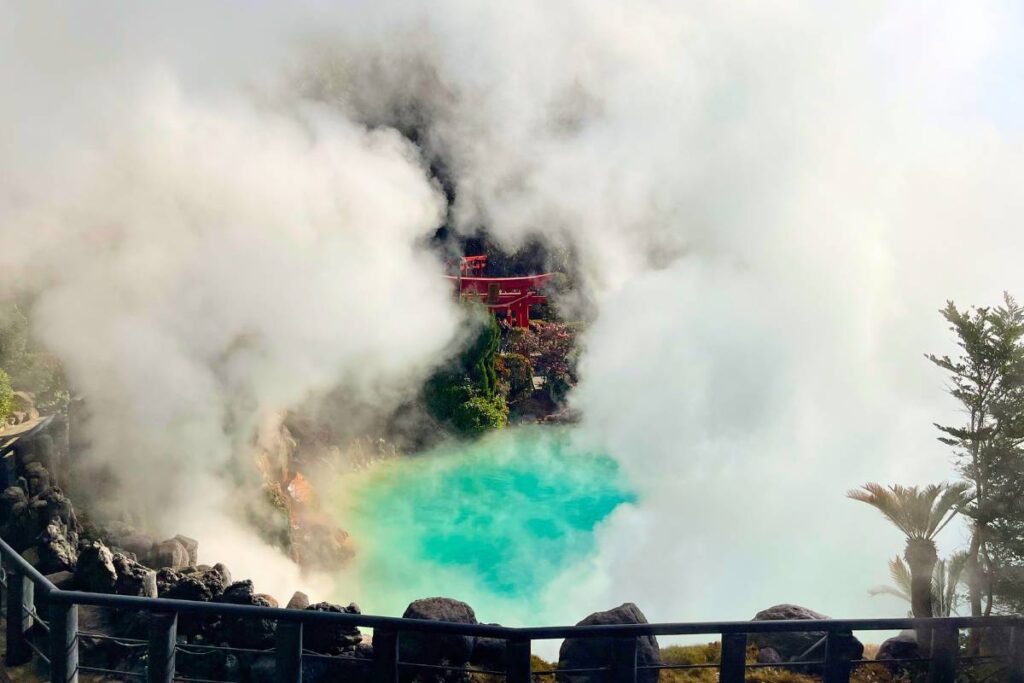
Planning a visit to Beppu’s Hells? Don’t worry! I’ve got you covered with this complete guide to the 7 Hells of Beppu!
Celebrated for their diverse appearance and strikingly vibrant waters, the Hells of Beppu are seven natural hot springs that are open to visitors for viewing.
Spread across the city of Beppu, these onsens are part of a larger network of thermal waters that feed into nearly 3,000 different hot springs.
In fact, Beppu is home to so many hot springs that it’s been dubbed the Onsen Capital of Japan.
I recently spent a few days exploring the resort city of Beppu and made it a point to visit all of its seven hells. Using this experience, I’ve compiled below an in-depth guide.
From admission fees to transportation, what to do, and which hot springs are actually worth visiting – here’s everything you need to know about the 7 Hells of Beppu.
*Please note: This post contains affiliate links to trusted partners. If you make a purchase using these links, I will earn a commission at no extra cost to you. Thank you for your support!
Planning a last-minute trip to Beppu’s Hot Springs?
Here are a few quick recommendations for you!
I suggest booking these services and activities in advance!
🚅 Getting There:
– Japan Rail Pass (Great option if you plan to travel all over Japan)
– Individual Shin Tickets (Will likely be cheaper if you don’t plan to visit many cities)
– Private Airport Transfers (For those who prefer to travel by car)
🛏️ Hotels:
– Super Hotel Beppu Ekimae (Mid-range hotel in a great location near the train station)
👣 Activities & Tours:
– 7 Hells of Beppu (Discounted combo pass for all 7 hot springs!)
– Guided Tours of Beppu (There are lot of options to explore!)
Where Are the 7 Hells of Beppu?
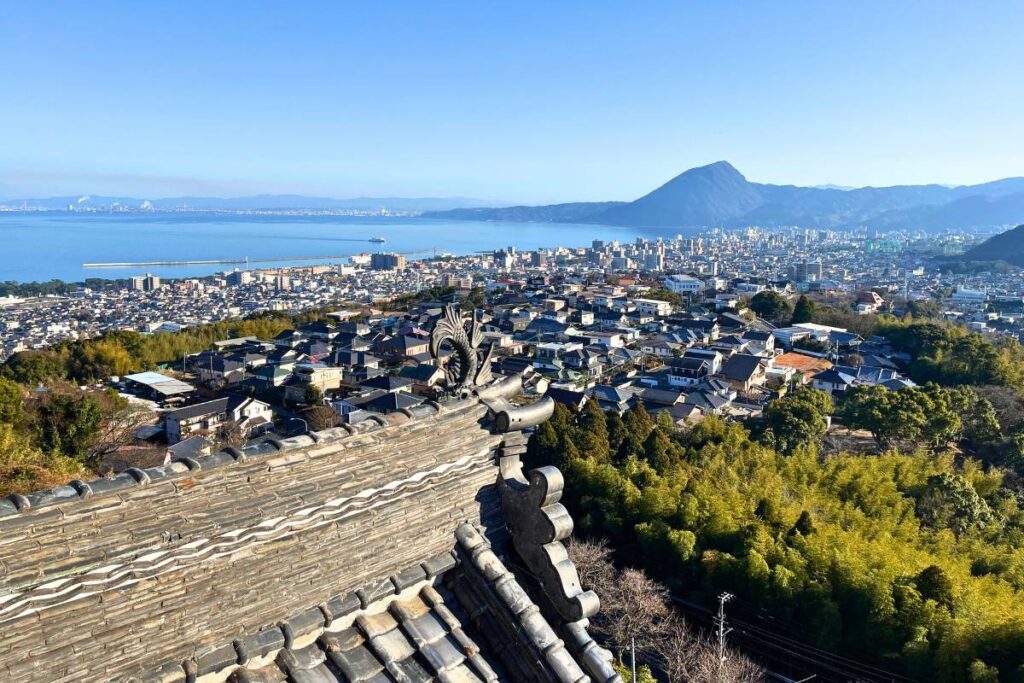
The Hells of Beppu are located in the city of Beppu, which lies along the northeastern coast of Kyushu Island in Oita Prefecture.
Beppu is situated approximately 2 hours away from Fukuoka by train and about 4 hours away from Nagasaki by bus.
If you plan to fly directly to Beppu, you’ll want to travel to Oita Airport (OIT), which is located in the city of Oita. This is the largest and most convenient airport to fly into when visiting Beppu.
From the airport, it’s about an hour ride to Beppu via public bus, taxi, or car.
Alternatively, you can also take the train from Kitsuki Station in Oita to Beppu Station.
However, keep in mind that Kitsuki Station is located about half an hour away from the airport. So, you’ll need to travel by taxi or bus to get there first.
Once you arrive at the train station, it’s another half hour to reach the city of Beppu.
Pro Tip: If you don’t have time in your itinerary to include a separate stopover in Beppu, consider joining a guided day trip from Fukuoka instead! You’ll get to visit some of the hells and check out a few other destinations along the way.
Best Time to Visit the 7 Hells of Beppu
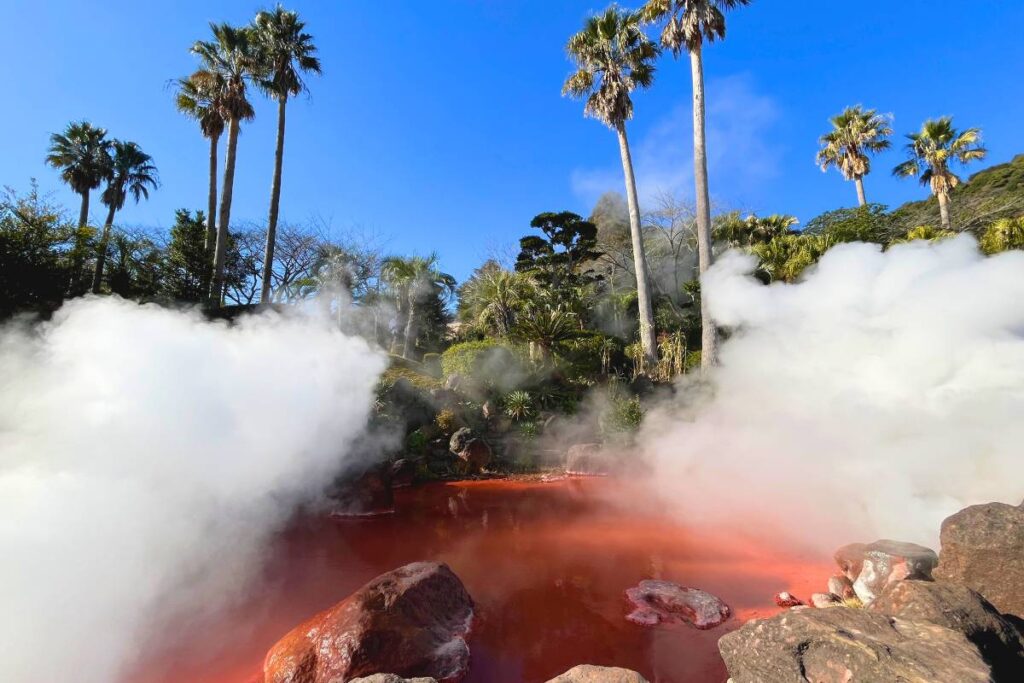
If you plan to explore the onsens and hot springs of Beppu, then I highly recommend visiting the city in either fall or winter.
Generally speaking, this time of year offers pretty mild weather with temperatures that rarely drop below 50°F (10°C) during the day.
On top of this, there are generally fewer tourists – which is a major bonus, as some of the hells are quite small and can become overcrowded.
Spring is another option to consider, as it also offers great weather. However, you are more likely to encounter larger crowds, especially around cherry blossom season.
And finally, there’s summer – which, in my opinion, isn’t a great time to visit Beppu.
Summer in Japan is already hot to begin with – add in the constant steam and heat from the hot springs, and Beppu can become quite unbearably warm.
How to Get Around the 7 Hells of Beppu
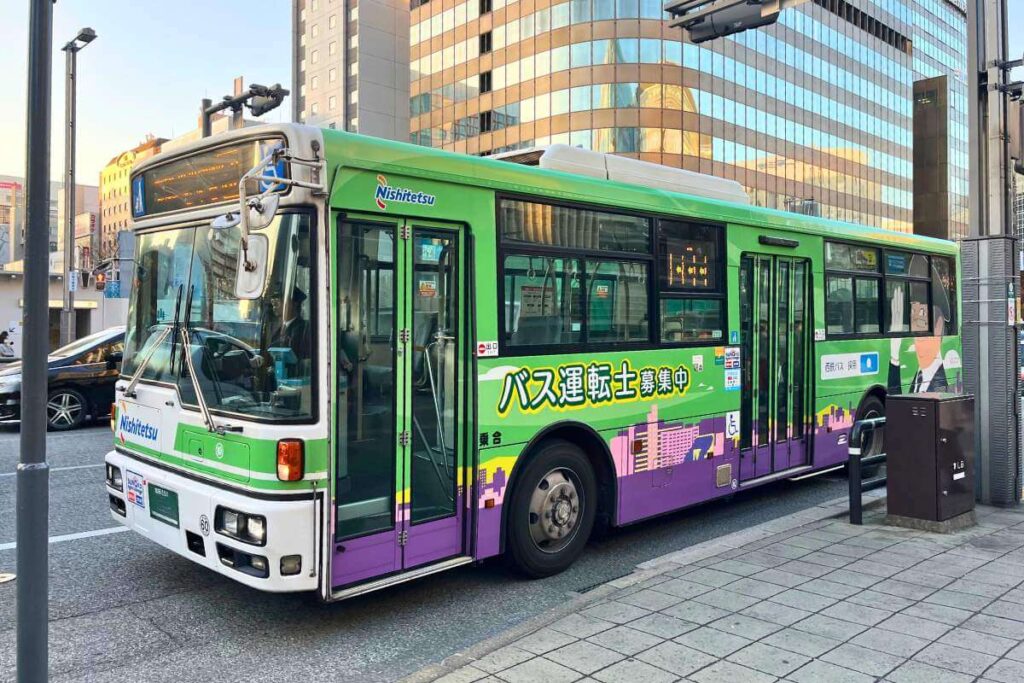
Buses are the main form of public transportation in Beppu.
The Hells of Beppu are clustered in two areas. There are 5 in Kannawa District and 2 in Shibaseki District.
Both districts are easily reachable via public bus, taxi, or car – so transportation shouldn’t be a problem.
For those traveling by bus, it takes about 20 to 25 minutes to get from Beppu Station to Kannawa. And then from there, it’s another 15-minute bus ride to reach Shibaseki.
Once you’ve arrived, whether in Kannawa or Shibaseki, it’s very easy to get around to the different hells. All of the hells in Kannawa and all of the hells in Shibaseki are within walking distance from each other.
Pro Tip: Use Google Maps to help you get around Beppu. It’s one of the best navigation apps for Japan, as it is synced with local public transportation and will provide you with accurate, up-to-date information on Beppu’s buses.
Admissions to the 7 Hells of Beppu
You can purchase admission tickets at the front entrance to any of the seven hells.
The entry fee for one hell is 450 yen per person or 200 yen for children in elementary and middle school.
There’s also a discounted combo pass that allows for entry into all seven hells. This costs 2,200 yen per adult or 1,000 yen per child.
This combo pass can be purchased online or at the entrance to any of the hells.
7 Hells of Beppu Map
To help you plan your trip, here’s a map overview of the Hells of Beppu.
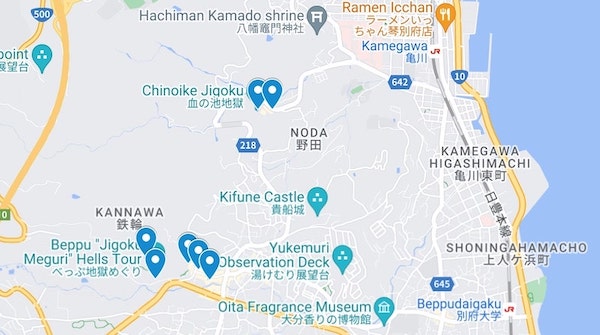
For an interactive version of this map, click here!
The 7 Hells of Beppu
Without further ado, here’s the low-down on each of Beppu’s Hells. I’ve included practical information, as well as, my own personal thoughts on which hells I feel are worth visiting.
Kannawa District
Most people start out their visit in Kannawa and then head over to Shibaseki afterward. But you are free to tour the hells in whatever order makes the most sense for you. I have them listed out in the classic order as recommended by the Beppu Jigoku (Hell) Association.
**Quick Side Note: Jigoku means “hell” in Japanese, so you’ll see these two words used interchangeably throughout this guide.
Umi Jigoku
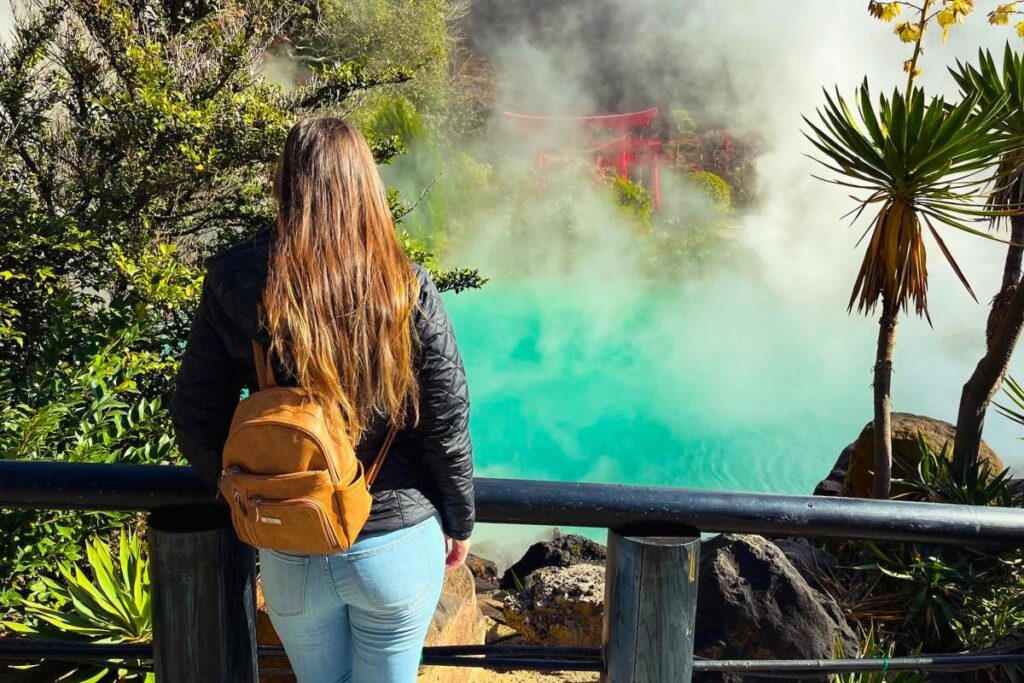
Featuring striking blue-green waters, Umi Jigoku or the Sea Hell is one of the most famous and picturesque hells in Beppu.
Named for its azure waters, this hot spring contains high amounts of iron sulfate, which allows it to retain its vibrant color.
Surrounded by lush greenery and geothermal steam, it’s certainly a sight to behold!
While you’re here be sure to also check out the other attractions that lie within the grounds.
From colorful gardens to bright red torii gates, a lotus pond, a souvenir shop, smaller orange onsens, and a foot bath, there’s much to be discovered and explored here.
My Thoughts: Visit it! Without a doubt, Umi Jigoku was my favorite hell. Not only is it super beautiful, but there’s also quite a bit to do here. So don’t rush yourself, make sure you have enough time to see everything here.
Oniishibozu Jigoku
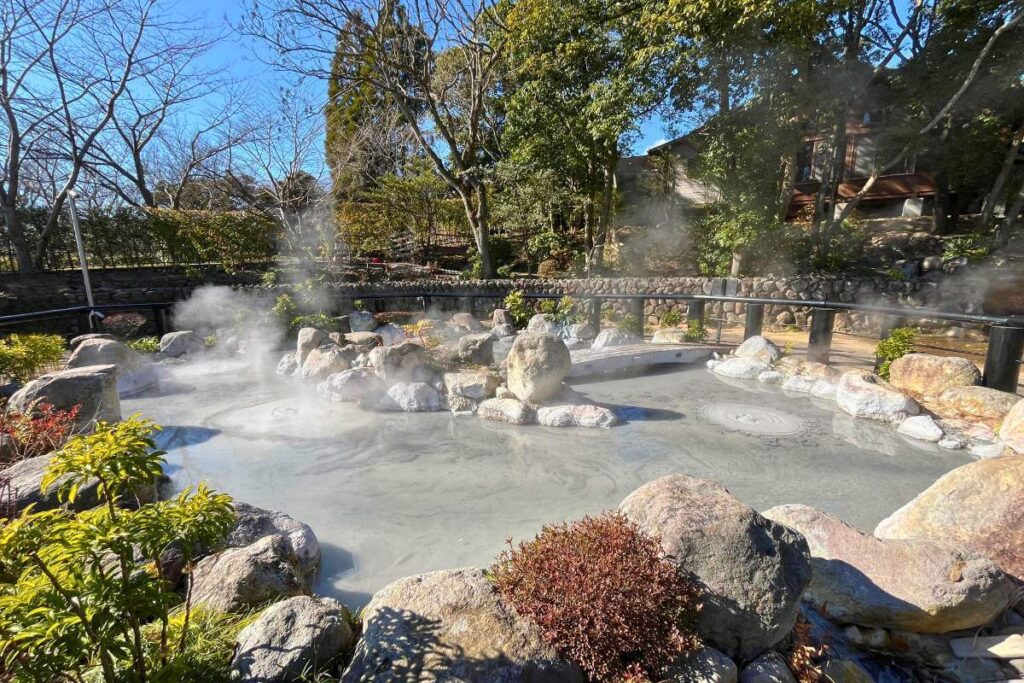
Consisting of several bubbling mud ponds, Oniishibozu Jigoku is, without a doubt, the most unique hell in Beppu.
It’s name, which means “Shaven Monk’s Head Hell” in English, is derived from the white pools that form around the mud bubbles. These pools are said to resemble the shaven heads of monks.
Aside from its interesting and almost otherworldly hot springs, this hell is also home to a circular foot bath.
Don’t worry though – this foot bath isn’t made of mud, instead, it’s fed by a nearby clear water hot spring.
My Thoughts: Visit it! While it may not be as pretty as some of the other hells, Oniishibozu Jigoku was definitely the most unique. It’s the only hell to have gray and white mud bubbles, which were actually quite interesting to see. On top of this, the foot bath here is really nice and wasn’t nearly as crowded as the one at Umi Jigoku.
Kamado Jigoku
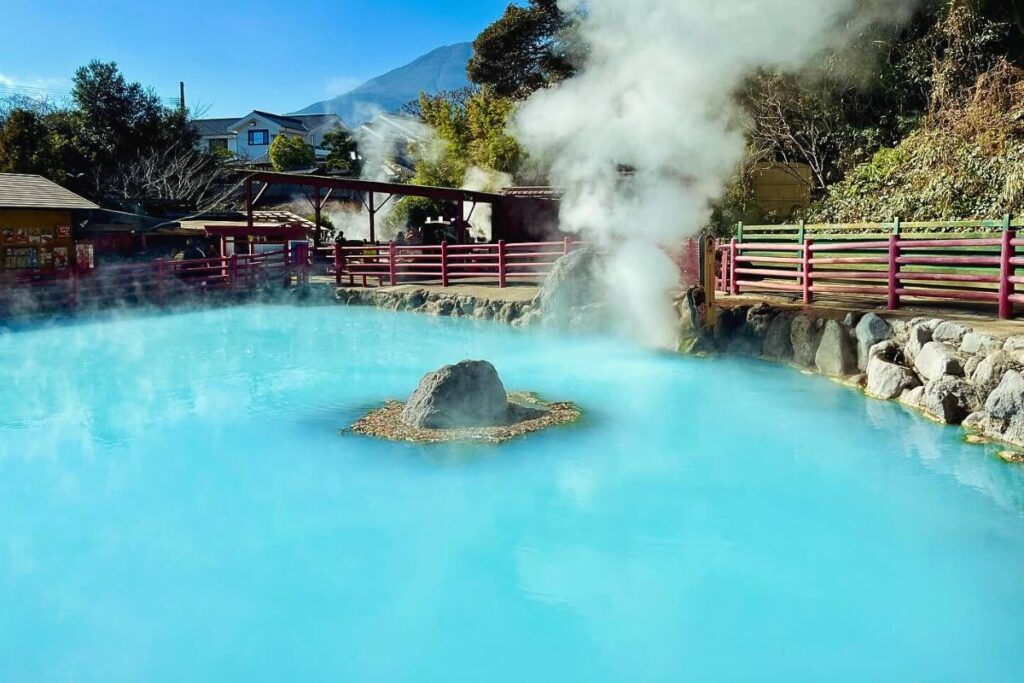
Consisting of several different onsens, Kamado Jigoku or the Cooking Pot Hell is named after an ancient myth related to Ujigami, a guardian god for a nearby shrine.
According to legend, worshippers used to steam rice over the hot springs as an offering for Ujigami. This was required once a year during the Kamado Hachimangu Shrine Festival.
Today, the hell continues to cook food using steam from the hot springs – but it does so for its patrons instead.
In addition to this, the hell provides visitors with the opportunity to drink hot spring water, bathe in its steam, and take a foot bath.
Meanwhile, the onsens themselves vary in size and come in a variety of colors including blue, green, red, orange, and brown.
My Thoughts: Check it out – if you have time to spare. While I did think that Kamado Jigoku was really pretty, and it offers the most variety in terms of onsens, it was also super crowded. It seemed to be the one location that all the tour buses visited, so it was quite busy at times. That being said, if you can time your visit in between bus tours, it would probably be more enjoyable.
Oniyama Jigoku
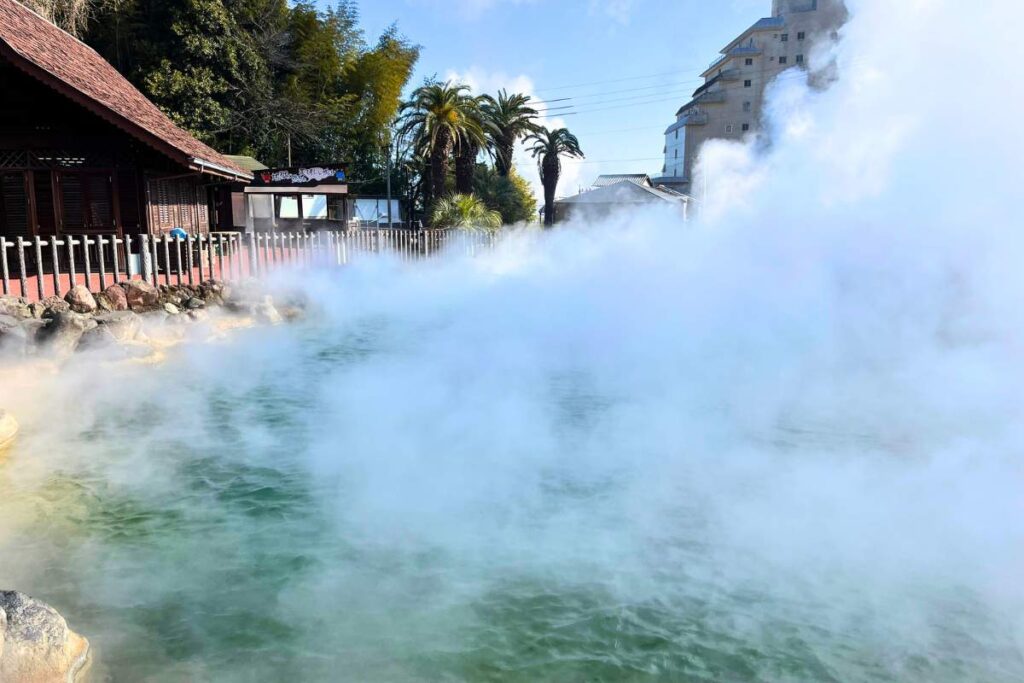
Home to its own group of crocodiles, this hell is aptly named Oniyama Jigoku or Crocodile Hell.
While crocodiles are not native to Japan, the hot springs around Beppu help create an environment that is more suitable for them.
As such, crocodiles are kept and bred in an area just adjacent to the hell’s hot springs.
While here, you can also check out the hell’s main onsen. This pond features milky-green waters and is typically accompanied by an impressive amount of steam.
In addition to this, there’s a small museum located on-site, where you can learn more about the hell and the crocodiles that are kept here.
My Thoughts: Skip it. Out of all the hells, Oniyama Jigoku was my least favorite. To begin with, the pond was really steamy, so you could barely see it. And then on top of that, all the crocodiles were grouped together in small enclosures, which, honestly, was pretty sad to see – at least for me.
Shiraike Jigoku
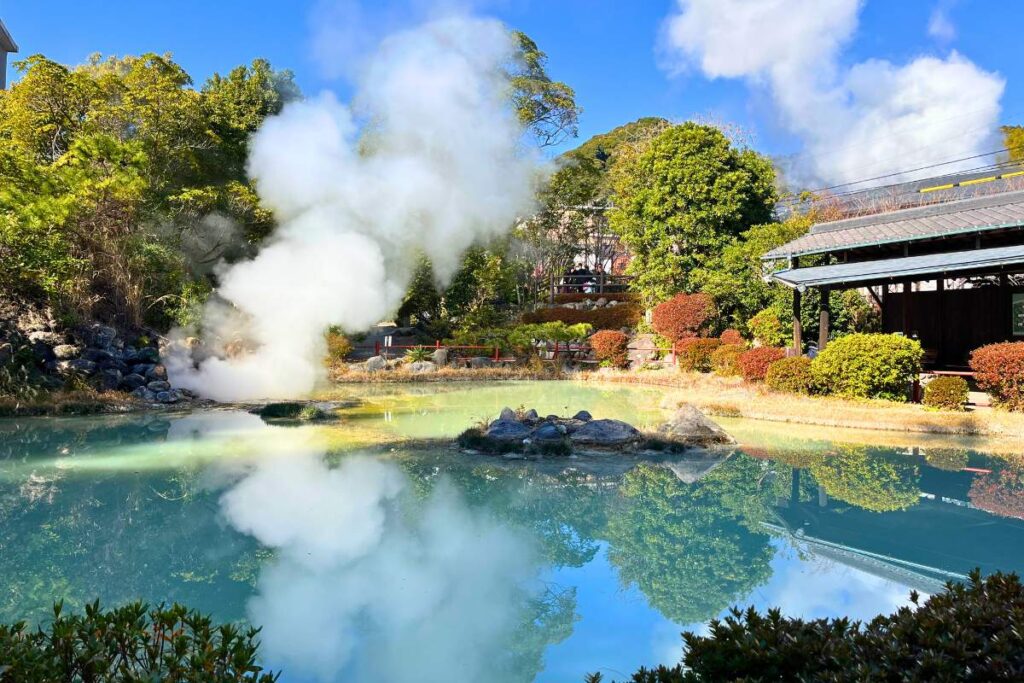
Offering a serene and peaceful atmosphere, Shiraike Jigoku or the White Pond Hell is one of the prettiest hells in Beppu.
Featuring a large milky white-green pond, the onsen is very picturesque as it’s surrounded by lush greenery and flowers.
In fact, it’s so visually appealing that it’s been declared a Nationally Designated Place of Scenic Beauty.
In addition to its charming setting, the hell is also home to a tropical fish aquarium that draws water directly from the hot springs.
My Thoughts: Visit it! When we were there, Shiraike Jigoku was the least crowded, so we were able to enjoy it much more. In addition, it has a very calm, peaceful, and serene atmosphere – which we definitely appreciated after the hustle and bustle of the other hells.
Hell-Steamed Cuisine
While you’re in Kannawa District, be sure to also set aside some time to try hell-steamed cuisine. Using steam from the hot springs, local vendors and restaurants are known to cook a variety of snacks and meals for patrons.
You can sample this unique cuisine at many of the hells and from vendors along the streets. Or, if you’d prefer a full sit-down meal, head over to Jigoku Mushi Kobo Kannawa. This is one of the most popular restaurants for hell-steamed food in Beppu.
Shibaseki District
The district of Shibaseki is located approximately 3 kilometers north of Kannawa. There’s a direct bus that you can take to travel between the two destinations, so it’s quite easy to visit both areas in one day.
Chinoike Jigoku
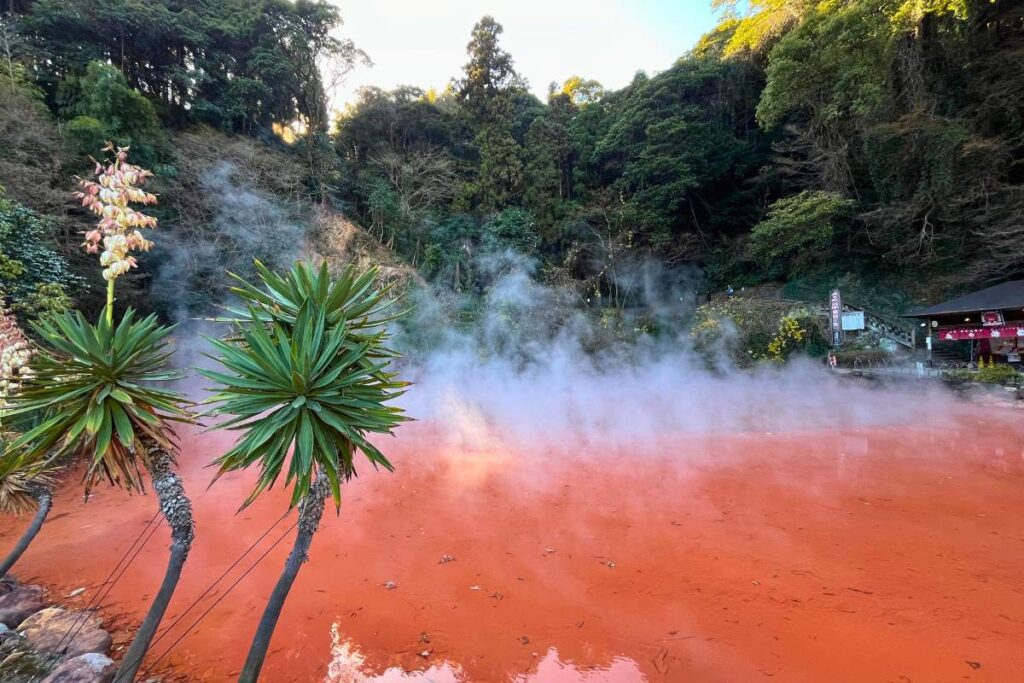
Featuring vibrant orange water, Chinoike Jigoku or the Blood Pond Hell is said to be one of the oldest naturally occurring hells in Japan.
Dating back more than 1,300 years, this onsen has also been designated a National Site of Scenic Beauty.
Given its location surrounded by forests and lush greenery, it’s certainly one of the prettier hells in Beppu!
While you’re here, be sure to also check out the hell’s mineral-rich foot bath and its extensive souvenir shop.
My Thoughts: Visit it – if you have time! While I really liked Chinoike Jigoku, it’s more time-consuming to see, because it’s located in Shibaseki District. That being said, if you can fit it into your schedule, I think it’s worth it. It’s really pretty and the souvenir shop is a great place to pick up some gifts for yourself and your loved ones.
Tatsumaki Jigoku
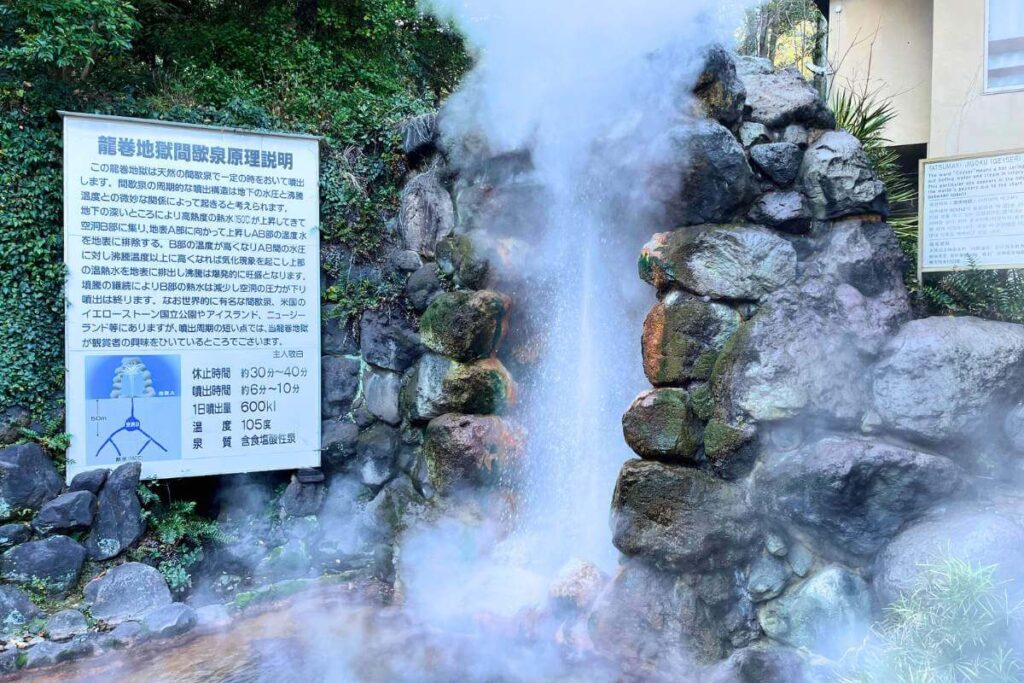
Known as the Tornado Hell, Tatsumaki Jigoku is not a typical onsen – but rather, a geyser.
Erupting every 30-40 minutes, the geyser can reach heights of up to 30 meters or 98 feet.
That being said, a roof has been added over the geyer to limit its spray, for safety reasons.
Attached to this hell, you’ll also find a really nice store that sells more high-end souvenirs.
My Thoughts: Skip it. To be honest, I was pretty disappointed with Tatsumaki Jigoku. The geyser here is blocked off and can’t reach its full height, so it’s not as exciting as I thought it would be. On top of this, if you don’t time your visit just right, you could end up sitting around, waiting for a while.
Where to Stay Near the Hells of Beppu
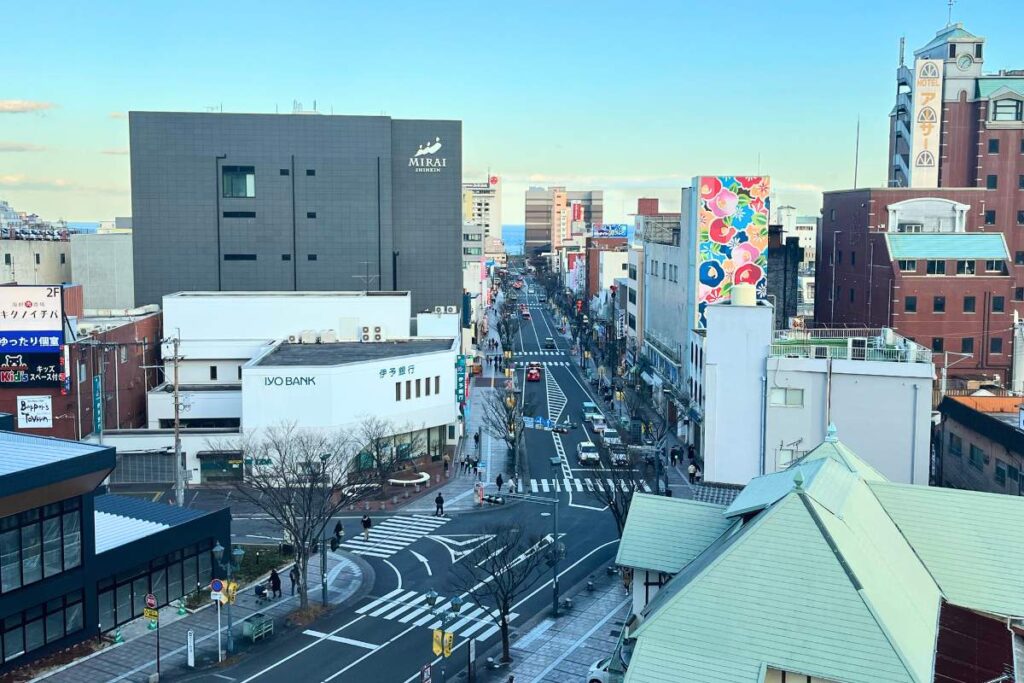
Beppu Station is a bit removed from the seven hells, but is still a great place to stay!
If you want to stay somewhere near the Hells of Beppu, I recommend booking accommodations in the Kannawa district.
This area is going to provide you with the easiest and closest access to 5 of the 7 hells. In addition, this district is home to a wide variety of hotels, traditional ryokans, and Airbnbs for you to choose from.
Another option to consider, if you don’t mind being a bit more removed from the onsens, is the area around Beppu Station.
This is the area where we stayed and we actually loved it!
It offered easy access to several restaurants, bars, cafes, and small shops – as well as the train station, of course.
🌟 Interested in spending more time in Beppu? Be sure to check out my Beppu itinerary for additional recommendations on attractions and things to do!
Frequently Asked Questions About Visiting the 7 Hells of Beppu
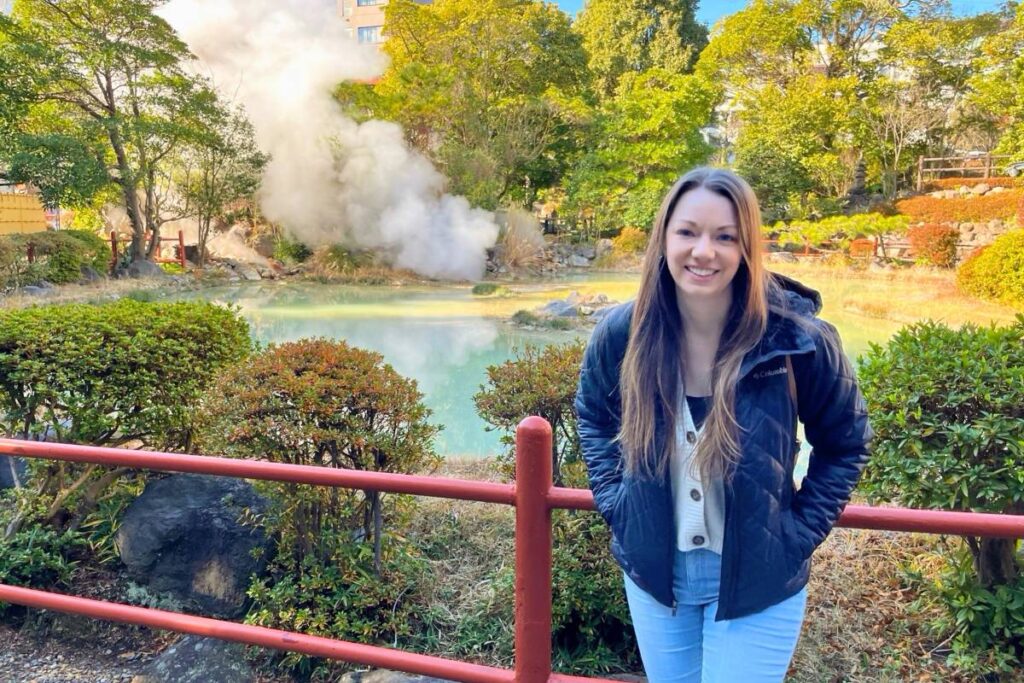
Here are my thoughts on some commonly asked questions about the Beppu hot springs.
Why Are Beppu’s Onsens Famous?
The onsens of Beppu are famous because there are so many of them! And they’re all so different. In total, Beppu is home to nearly 3,000 hot springs, which is the highest concentration of thermal water in Japan. In fact, there’s only one other place in the entire world that has more hot springs, and that’s Yellowstone National Park in the United States.
How Many Jigoku Are There in Beppu?
There are technically 8 hells in Beppu. However, the 8th one, Yama Jigoku or Mountain Hell, isn’t included in the Beppu Jigoku Meguri Hells Tour, which is the official tour of Beppu’s Hells. As such, I didn’t visit it or include it in this guide. However, I do know that it features several steam vents, as well as a mini petting zoo.
How Long Does It Take to Tour the 7 Hells of Beppu?
Most people spend about 10-15 minutes at each hell. Factor in transportation on top of this, and you’re looking at a total time of about 2.5 to 3 hours. However, this can vary greatly depending on your level of interest and the amount of time spent exploring all of the activities at each location.
Is It Worth It to Visit All 7 of the Hells of Beppu?
In my opinion, I don’t think it’s necessary to visit all seven hells of Beppu. Some of them just weren’t that exciting for me, and they didn’t seem like they were worth the time or effort. If I had to do it all over again, I’d probably just pick the ones that sound the most interesting and skip the others.
But, at the same time, there’s nothing wrong with visiting all of them. A lot of people do, and they generally seem to enjoy themselves. So, it really just comes down to your personal preferences – and how much time you have to spare.
Which Hells of Beppu Do You Recommend?
My top three favorite hells are Umi Jigoku, Onnishibozu Jigoku, and Shiraike Jigoku. If you’re short on time, those are the three that I’d recommend. That being said, if you can swing it, I also really liked Chinoike Jigoku. It’s just a bit more time-consuming to visit because it’s located further away from my other recommendations. But, if you can fit it into your schedule, I think it’s worth it to do so.
Final Thoughts: The 7 Hells of Beppu
So, there you have it – my complete guide, thoughts, and opinion on the 7 Hells of Beppu! Hopefully, this article is helpful in planning your own trip to Beppu’s most famous attraction.
Even if you only have time to visit one hell, I strongly recommend you do so. The Hells of Beppu are so unique – and unlike anything else I’ve ever experienced in Japan!
Are you interested in visiting the Hells of Beppu, Oita? If so, which onsen sounds the most exciting to you? Let me know in the comments below!
Enjoy this post about Beppu’s Hells? Pin it now for later!
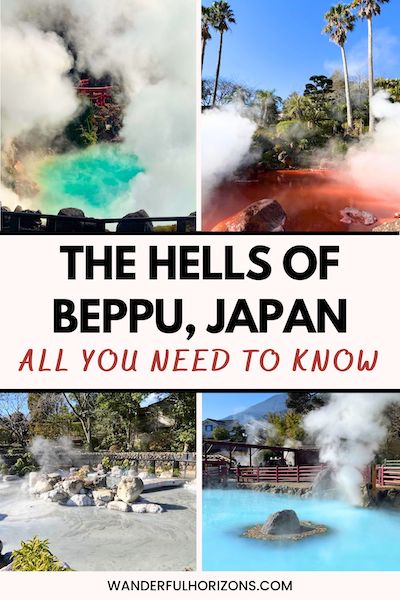
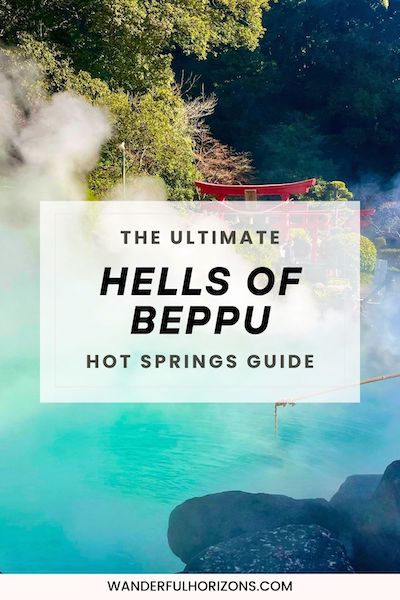
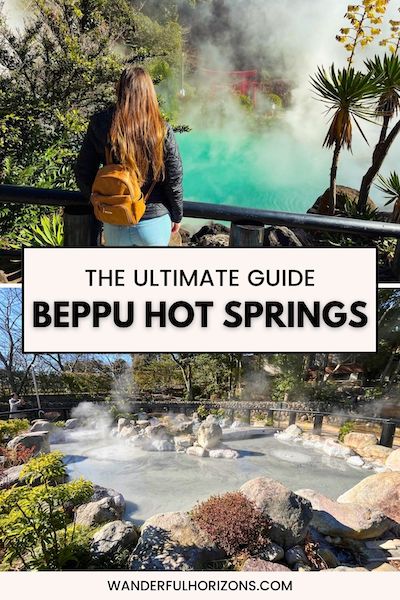

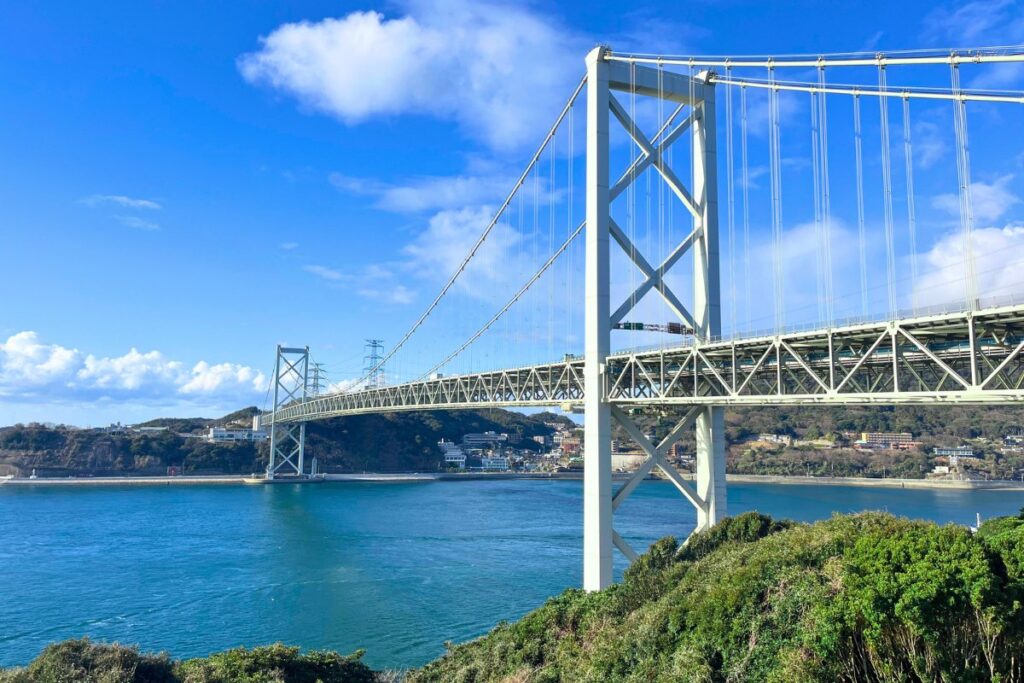
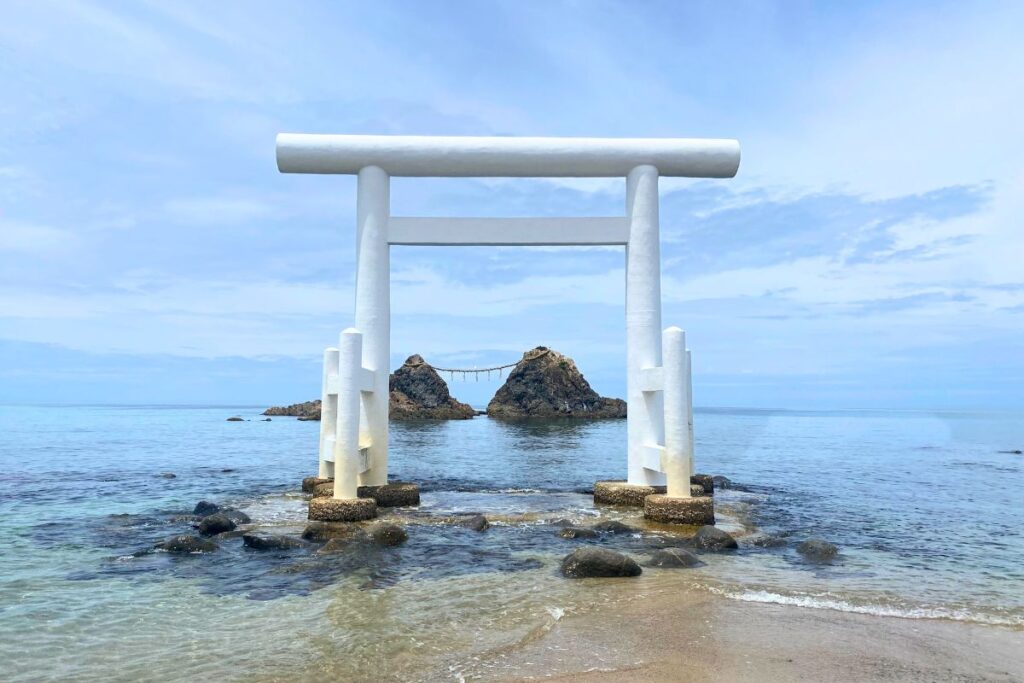
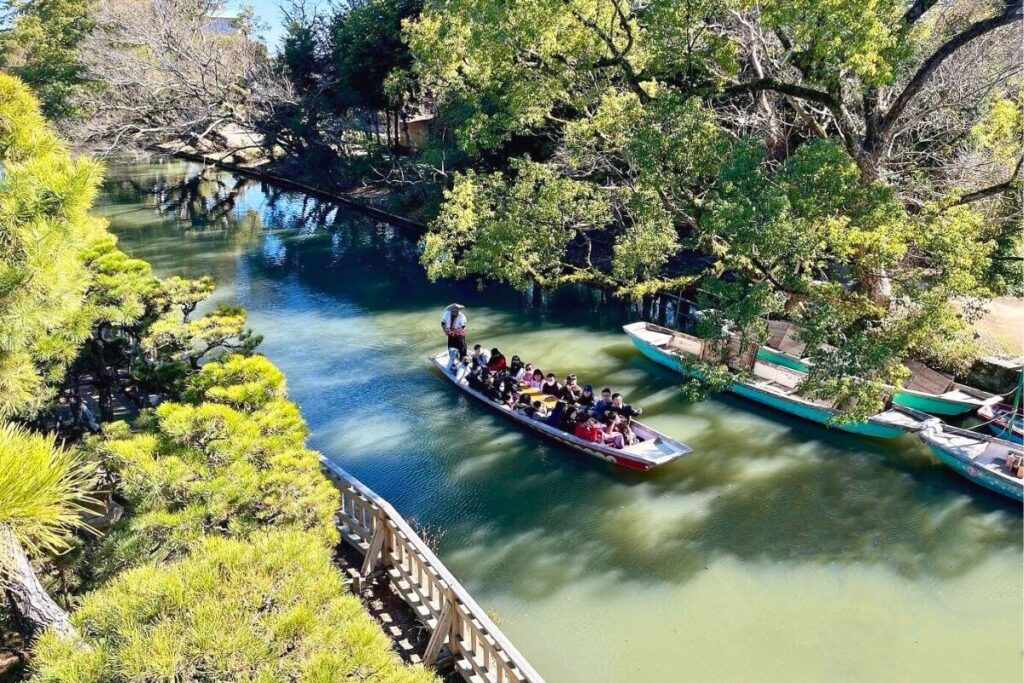
Can you visit over 2 days, or is it just a day pass for all hells hotsprings in one go.
Thanks
I did them all in one day, but from what I’ve read online the combo pass appears to be valid for 2 consecutive days. That being said, you can only enter each hell once.
Thank you for such a wonderful and thorough post, this is super helpful and i,m looking forward to our trip there.
Do you offer private tours for families for other parts of japan?
Thanks!
You’re most welcome! I’m glad you found my post helpful! Unfortunately, I don’t offer any private tours. But I am always adding new content to my blog and plan to cover other areas of Japan soon!
Such a great post! We ended up doing 6 of the 7 (skipped the crocodiles) since we had time, but your analysis and descriptions were a tremendous help in creating our plan. The one thing I would say about the geyser, while the rock wall constraint does render the geyser itself underwhelming, during late April and Early May the hillside garden overlooking the geyser is exploding with azaleas of every color. It is really beautiful and only a 1 minute walk from Chinoike.
Thanks for your efforts to write this guide!
You’re most welcome! I’m so glad to hear you had a great time! And thank you for the tip about the azaleas – I had no idea. I’ll have to keep that in mind for the future!
Hi, some hells are located in the same district, like Kannawa. Are they within walking distance or we have to drive? Thanks
Yes, all of the hells in Kannawa District are within walking distance of each other! As are the ones within Shibaseki District! You will, however, need to either drive or take the bus between the two districts – if you plan to explore both areas.